 |
by Lawrence Bonk on (#6Y14J)
The Roomba 105 Vac Robot + AutoEmpty Dock has been discounted to $280 as part of an extended Father's Day sale. This is a record-low price, as it usually costs $450. Math tells me that's a cool $170 off. As the name suggests, this lil robovac will automatically head to the included debris dock to empty its contents. It'll do this after every cleaning session and the company says the canister is large enough to go 75 days before requiring manual disposal. However, results will likely vary on that front. I'm talking to you, pet owners. This is a solid effort by Roomba, which is a company that appeared numerous times in our list of the best robot vacuums. The suction power is on point and the dock includes a filtration bag that traps allergens. It ships with a multi-surface bristle brush and an edge-sweeping brush. Of course, it also provides access to the company's LiDAR software for navigation. It can even clean in the dark. There's one downside. This is a fantastic vacuum, but it is just a vacuum. The Roomba 105 is not a hybrid unit, so there's no mopping functionality. For that, you'll have to spring for a pricier model. Follow @EngadgetDeals on X for the latest tech deals and buying advice.This article originally appeared on Engadget at https://www.engadget.com/deals/this-roomba-with-an-auto-empty-dock-is-down-to-a-record-low-price-184105673.html?src=rss
|
 Engadget is a web magazine with obsessive daily coverage of everything new in gadgets and consumer electronics
Engadget is a web magazine with obsessive daily coverage of everything new in gadgets and consumer electronics
| Link | https://www.engadget.com/ |
| Feed | https://www.engadget.com/rss.xml |
| Copyright | copyright Yahoo 2025 |
| Updated | 2025-12-24 00:47 |
 |
by Ian Carlos Campbell on (#6Y125)
Meta is testing a way to hide spoilers on Threads, according to a new post from Mark Zuckerberg. The feature lets you obscure text or an image so that they're only viewable once they're tapped or clicked.In the current version being tested, you have to highlight your chosen text or tap on the image and then tap "Mark spoiler" to hide it. Inside the Threads app there's even a swirling particle animation that covers text and images before flittering away when you tap on them.MetaMeta suggests the feature is being added to make it easier to talk about ongoing shows without accidentally spoiling anything. The platform has a growing community of users who use Threads to discuss media, and an algorithmic feed that makes it pretty easy to get a spoiler dumped in front of you. Not many social media platforms outside of Reddit offer a way to obscure spoilers, either. Instead, users often have to turn to more general moderation tools like muting words or phrases to avoid learning things before they've watched a new movie or show.The new spoiler feature doesn't appear to be widely available yet, but it's just the latest in a series of changes Meta has been experimenting with in Threads over the last few months. The biggest being the addition of a dedicated DM inbox. Up until this point messaging someone on Threads sent you to Instagram DMs, but Meta is now testing a separate Threads DM inbox in Hong Kong, Thailand and Argentina.This article originally appeared on Engadget at https://www.engadget.com/social-media/threads-is-testing-out-a-way-to-hide-spoilers-182346919.html?src=rss
|
 |
by Alessandro Fillari on (#6Y126)
Obsidian Entertainment has been an incredibly versatile game developer over the years, even venturing outside its RPG comfort zone with the original Grounded. As a survival adventure game where you're shrunken down and explore the hidden, vast world of a backyard, it became a well-loved hit, and it evolved even further throughout its early access period. But now, the developers have big plans for Grounded 2, which has new features and a larger scope that was too big for the original to contain.Shortly after the reveal during the recent Xbox Games Showcase alongside Summer Game Fest 2025, I got to play the opening of the sequel, which sees the familiar crew of teenage scavengers, now a little older and wiser, shrunken down once again to survive a new small world hidden in the town's park. Even as a new iteration of a familiar premise, which is essentially the survival gameplay of Rust by way of the whimsical Honey, I Shrunk the Kids, Grounded 2 is already showing some promise as the bigger and better sequel.Grounded 2, which will also launch in early access, already feels like a bigger game, even from the confines of the tutorial zone. For starters, there's a larger focus on building up the experience of the four teenage scavengers and how they fit into the larger story. It's not quite Yellowjackets when it comes to teen drama, but the crew exploring the small world of the park have colorful language and quips at their disposal. There's a generally stronger sense of personality in Grounded 2, which is bolstered by some more character-driven writing and opportunities to take in the lore of the company responsible for the experiments in town.The experience of playing Grounded 2, much like the original and other survival games, is all about gathering resources from the land and acquiring knowledge to stay alive. Along with collecting materials to build weapons, armor and structures, you'll also have to keep your characters fed and hydrated. You'll also need to defend yourself against the various critters roaming about, such as the ants and the spiders. Also returning is the arachnophobia accessibility option to make them appear less disturbing for players. Thankfully, you can now use a dodge to avoid attacks - a first for the series - and combat is generally more responsive and fair.Grounded 2 feels like a more well-rounded and refined take on the original, which is a solid game in its own right. One great addition that I got to play with was the new ant mount, or buggy, as the devs call it. You'll be able to ride on top of a friendly ant that can attack enemies, move faster throughout the world, and even collect material far more quickly than the human scavengers.Obsidian EntertainmentShortly after my hands-on experience, I sat in on a roundtable discussion with game director Chris Parker and producer Miles Winzeler from Obsidian Entertainment, who explained how early access feedback from players helped bring the game to its current state. In order to fully implement their vision for Grounded, though, they would need a new game."Almost everything in Grounded 2 comes from feedback from the community that we had gathered from the first game," Parker said. "We had to look at what was important to work on with the sequel. People always want more stuff to do. They wanted to have the buggies, which was a huge one and our number one most requested feature from out the gate on Grounded 1. We then had to work on new creatures, armor and weapons, among other things. How can we further develop our progression systems? So those were all the things that we took on from the beginning for Grounded 2."Grounded 2 felt like a more fully realized game, which leveraged years of work on the original. Along with a more developed story campaign focusing on helping the kids survive the portion of Brookhollow Park they have to explore - which is more than three times the size of the original's map - The game will also launch with creative mode, which was a popular feature that let players focus on exploring and building up structures at their leisure.Obsidian Entertainment"We're always trying to challenge scale and how we can create a sense of awe and mystery by having something that's supposed to be normal but is now this gigantic thing," Parker said. "That's always the fun when making this game."I really took to the added scope of Grounded 2. Not just as a shrunken person trapped on the grounds of a park but also for the new features and ideas at work for the sequel. With the game coming out in July for early access, Grounded 2 has already got me invested in making a return visit to this small world with big ambitions.Grounded 2 will release in early access on July 29 for Xbox Series X|S and PC, and will be available for Game Pass subscribers.This article originally appeared on Engadget at https://www.engadget.com/gaming/xbox/obsidian-entertainment-has-big-ambitions-for-grounded-2s-small-world-173027415.html?src=rss
|
 |
by Andre Revilla on (#6Y0ZS)
Donald Trump is launching a cellular brand called Trump Mobile. The newly formed company, which was announced today by Donald Trump Jr., will sell a single wireless plan called The 47 Plan," which offers unlimited talk and texting, as well as unlimited data that throttles speeds after the first 20GB each month. The Trump Mobile service is a white-label plan built on an existing mobile virtual network operator (MVNO) called Liberty Mobile. The company also plans to sell The T1 Phone," a gold-accented smartphone that it says will be manufactured in the United States.During the announcement event for Trump Mobile held at Trump Tower in New York City, Donald Trump Jr. said they were building something for people who have been underserved," and to make sure that real Americans could get true value from their mobile carriers." Trump Mobile's only plan will cost $47.45 per month, which is roughly double that of equivalent offerings at other low-cost carriers like Mint Mobile and Boost Mobile. Liberty Mobile, the MVNO behind Trump Mobile, offers plans starting at $20 per month. Customers will be able to use their own devices with a Trump Mobile SIM card.The plan will supposedly include a telemedicine service powered by Doctegrity, which will allow subscribers to access medical and behavioral health services through the third-party provider. The plan is also said to include roadside assistance provided by Drive America and mobile device protection by Omega Mobile Care.Details on The T1 Phone are sparse, though some specs are listed on the website. The phone is said to sport a 6.8" AMOLED screen with a 120 Hz refresh rate, a rear three-camera setup with a 50MP main camera, and 2MP depth sensor" and macro cameras, a fingerprint sensor and AI Face Unlock," and a 5000mAh long life camera," which we presume was intended to describe the battery. The phone is said to run on Android 15. Oh, and it costs $499, which is both more than what it's likely worth, and casts doubt on its manufacturing claims. Recall that estimates for American-made iPhone were in the ballpark of $1,500. Who knows if it will ever see the light of day, but if it does, maybe this piece of Trump-branded merch will be free of obvious spelling errors.Donald Trump's various licensing ventures have proved lucrative for the sitting president. In his latest financial disclosure, Trump disclosed over $50 million in income from token sales related to his crypto venture with World Liberty Financial. The disclosure also listed incomes of $2.8 million from Trump Watches, $2.5 million from Trump Sneakers and Fragrances, $1.3 million from the Greenwood Bible and $1.16 million from his NFTs.This article originally appeared on Engadget at https://www.engadget.com/mobile/god-help-us-donald-trump-is-launching-trump-mobile-and-plans-to-sell-a-phone-155830166.html?src=rss
|
 |
by Kris Holt on (#6Y127)
Reports emerged earlier this year that Meta was working with Oakley on smart glasses and it seems we're about to see the fruits of those labors. A new Instagram account called @oakleymeta has popped up and its first post teased an announcement for this Friday (June 20). Instagram's own official account and Meta CEO Mark Zuckerberg shared the clip on their stories, as did Oakley on its social channels, so this is legit.The end of the video shows the Oakley and Meta logos side by side in a very similar fashion to the branding for the Ray-Ban Meta glasses. Meta's web store has a banner with the same text used in the teaser - "The next evolution arrives June 20" - and an option to sign up for updates on products, news and innovations.So, unless this is a bait and switch, we'll probably see Oakley Meta glasses this week. Of course, Oakley and Ray-Ban share a parent company in EssilorLuxottica.Earlier this year, Bloomberg reported that a set of smart glasses based on Oakley's Sphaera glasses was on the way. The camera in the Ray-Ban Meta glasses is set in one of the sides of the frame, but it's expected to be in the centre of the Oakley Meta glasses. These new smart glasses are said to be aimed at cyclists and other athletes, perhaps to try and challenge GoPro in the action sports market.This article originally appeared on Engadget at https://www.engadget.com/wearables/meta-and-oakley-tease-a-smart-glasses-announcement-for-june-20-172532944.html?src=rss
|
 |
by Amy Skorheim on (#6Y0ZQ)
I test a lot of batteries and I find myself drawn to the ones that do a little extra, like offering built-in cables, magnetic charging, onboard displays or, in this case, a handy kickstand that lets you view your phone as it recharges. Anker's MagGo 10,000mAh power bank is the one we recommend for iPhones in our guide to the best power banks. Right now, it's 20 percent off, bringing the $90 brick down to $72. That's not the lowest price we've seen - it dipped below $60 for Black Friday last year - but this is the best deal we've seen since then. In my test with an iPhone 15, the bank's 10,000mAh capacity charged the handset from near-dead to full and had enough juice left over for an additional 70 percent refill. It was fairly speedy too, getting the phone up to 85 percent in about 90 minutes. The kickstand is sturdy and the magnets hold the phone firmly. Though that compatibility is restricted to MagSafe iPhones (iPhone 12 and newer), the USB-C port on the side means you can charge other devices with a wired connection. It even comes with a USB-C to C cable. A digital display on the side tells you how much charge the battery has left as well as how much wattage is funneling to your device as you charge. It comes in five colors: white, black, blue, green and pink, all of which are on sale. You can get the same deal directly from Anker with an auto-applied code. Of course, the battery may dip lower for Amazon's Prime Day sale that's expected in July, but even without a further discount, this is still a good deal on a capable portable charger. Follow @EngadgetDeals on X for the latest tech deals and buying advice.This article originally appeared on Engadget at https://www.engadget.com/deals/our-favorite-power-bank-for-iphones-is-20-percent-off-right-now-163026961.html?src=rss
|
 |
by Cheyenne MacDonald on (#6Y0ZR)
After August 4, creators setting up a paid membership page on Patreon will have to pay a 10 percent fee on their earnings under the platform's new standard plan. While Patreon currently offers Pro and Premium plans, which carry fees of 8 percent and 12 percent of creators' income, respectively, it's merging the two into a single option moving forward. The price increase only applies to creators publishing a new page; Patreon says it will continue to honor the lower Pro rate for anyone who has locked it in by August 4.Once the change is in place, things will also get a bit cheaper for creators who were operating under the Premium (12 percent) plan. Rather than continuing to pay 12 percent, Premium creators will be shifted to a custom "Pro + merch" plan that will come with an 11 percent fee. If they remove the merch option, the fee will drop to 8 percent.Patreon also says it's increasing the amount of free storage it'll provide for creators using Patreon Video. While it previously said it would provide storage for up to 100 hours of video across the account's lifetime and charge for anything beyond that, Patreon now says it will begin offering 100 hours of video per month for free later this summer. The move comes shortly after the platform teased new tools including a built-in livestreaming feature, Live Video. Patreon began tests of Live Video among select creators this spring, with plans for a summer rollout.This article originally appeared on Engadget at https://www.engadget.com/social-media/patreon-is-raising-its-fees-for-new-creators-this-summer-161546739.html?src=rss
|
 |
by Lawrence Bonk on (#6Y0ZT)
The Switch 2 is officially out in the wild, but the launch lineup is a bit thin. Mario Kart World is great, of course, but I'm missing a legitimate 3D platformer. That's where Donkey Kong Bananza comes in. Nintendo has announced a Direct livestream for its next first-party game, scheduled for June 18 at 9AM ET.It'll stream live via Nintendo's official YouTube account. We've put an embed below, so feel free to keep this page bookmarked for Wednesday morning. We'll be watching and will pull out all of the juicy banana-shaped nuggets.Nintendo promises "roughly 15 minutes of information about the upcoming Nintendo Switch 2 game." That matches the length of the recent Direct that was dedicated to Mario Kart World.We still don't know too much about this game, other than the basics. It stars Donkey Kong and he wants to collect gigantic gold bananas because of course he does. The game worlds are destructible, so the goofball gorilla can get his Minecraft on and dig through just about anything.It has been suggested that any ape-related destruction remains as a permanent part of the map, thanks to the increased power of the Switch 2. The initial trailer also shows some sidescrolling sections inspired by Donkey Kong Country.This seems like the perfect video game to tide us over until Mario gets his lazy butt away from the racing tracks and back into saving kingdoms. Donkey Kong Bananza will be available on July 17 for Switch 2.This article originally appeared on Engadget at https://www.engadget.com/gaming/nintendo/theres-a-nintendo-direct-for-donkey-kong-bananza-on-june-18-153503678.html?src=rss
|
 |
by Kris Holt on (#6Y0X0)
It has been a long time coming - seven years since Meta first announced its plan to do so, in fact - but ads are starting to appear in WhatsApp as of Monday. They'll only be visible on the Updates tab and the company says those who use the app only to chat with family and friends really won't see any change to their WhatsApp experience. The same goes for two other new features: channel subscriptions and promoted channels. "We've been talking about our plans to build a business that does not interrupt your personal chats for years and we believe the Updates tab is the right place for these new features to work," a company blog post reads.WhatsApp users will be able to chat to a business that's using the Status tab to advertise a product or service, according to Meta. The company says it will use some user data for ad targeting, including your device's language, country or city, channels you follow and how you interact with ads. If you've added WhatsApp to Meta's Accounts Center, the company will use your ad preferences and info from across your Meta accounts. Meta says it won't sell or share your phone number with marketers. Nor will it tap into your chats, calls and status for ad targeting - those will all still have end-to-end encryption.The Status tab is valuable screen real estate. Meta says more than 1.5 billion people use it every day. Advertising is still by far the company's largest stream of revenue so the only really surprising thing about Meta starting to show ads in WhatsApp is that it took so long. After all, the company could probably do with more ways of making enough money to underwrite parts of the business that may take a long time to turn a profit, if they even get to that point.This article originally appeared on Engadget at https://www.engadget.com/apps/whatsapp-has-ads-now-but-only-in-the-updates-tab-144829657.html?src=rss
|
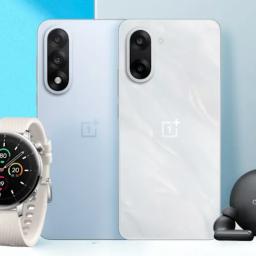 |
by Lawrence Bonk on (#6Y0X1)
OnePlus just announced the Nord 5 smartphone, a refresh of its popular mid-range handset line. This one includes a flagship Snapdragon 8S Gen 3 chipset by Qualcomm, which should provide plenty of raw power for gaming, multitasking and general use.There's an upgraded cooling system here, along with support for LPDDR5X RAM. It features a dual rear camera system and will be available in a pale blue finish that's officially called "Dry Ice."The company says the upgraded specs allow the Nord 5 to really shine when gaming, touting "unparalleled performance in its class" with "robust support for leading mobile games." It mentioned that the device can run Call of Duty: Mobile natively at 144FPS, with real-time ray tracing.OnePlus is also releasing a companion phone called the Nord CE5. We don't know much about this one, other than it's likely to be a slightly cheaper version of the standard headset.OnePlusBoth of these phones will feature the company's newly-announced Plus Key, which replaced the Alert Slider. Users can customize this button to perform a number of tasks, but it's better known as an instantaneous way to pull up AI tools. The cute lil AI button first appeared with the OnePlus 13s, which launched in Asia earlier this month.In addition to the Nord 5, the company also announced the OnePlus Buds 4. These high-end earbuds offer ultra-low latency audio for gamers, with dual drivers, support for Hi-Res audio and other bells and whistles. They will be available in both green and dark gray. It also revealed a new smartwatch and a tablet.OnePlus We don't have pricing or availability information for any of this stuff just yet. The company has a launch event planned for July 8, which should provide us with all of those relevant details.This article originally appeared on Engadget at https://www.engadget.com/mobile/smartphones/the-oneplus-nord-5-features-a-powerful-snapdragon-8-chip-143206053.html?src=rss
|
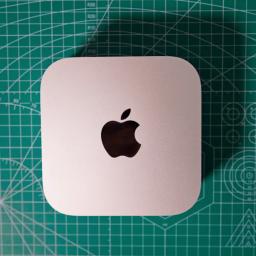 |
by Sarah Fielding on (#6Y0X2)
There's no denying that getting a high-quality computer is going to set your finances back a bit. So, when one of them gets discounted we want to scream it from the rooftops. Such is the case today with a solid sale on Apple's 2024 Mac mini (M4). Right now, the newest Mac mini is available for $499, down from $599 - a 17 percent discount. The deal, which is only $10 more than it's all-time low price, gets you 16GB RAM and 256GB SSD storage, but no AppleCare+. You can also opt for the 16GB version with 512GB SSD storage for $719, down from $799. Then there's the top storage option, which has a 10 percent discount. The Mac mini with 24GB RAM and 512GB SSD storage has dropped to $849 from $999. We gave the newest Apple Mac mini a 90 in our review thanks to perks like the impressive speed of its chip (though we did test the M4 Pro). It also offers front USB-C and headphone ports for easy use, along with an overall smaller design. Plus, it's great that even the base version starts at 16GB of RAM. Check out our coverage of the best Apple deals for more discounts, and follow @EngadgetDeals on X for the latest tech deals and buying advice.This article originally appeared on Engadget at https://www.engadget.com/deals/apples-mac-mini-m4-is-back-on-sale-for-499-141523040.html?src=rss
|
 |
by Sarah Fielding on (#6Y0TJ)
Once upon a time Facebook was filled with posts about the minutiae of your day and album after album of photos of just about every experience you had. By now, a lot of this media is likely hidden with the "only me" setting. But, regardless of how much you use Facebook these days, it's probably home to a lot of memories you want to hold on to - or at least have the opportunity to laugh at later.The good news is that you can download your Facebook information. You can access things such as your posts, photos you're tagged in, groups you belong to, friendships and your search history. You can also see apps that you've connected to through Facebook and your interactions with ads. However, you won't see content you've deleted and some information might not be available for your entire time on Facebook - depending on when and how the platform stored specific media.So, how do you download your Facebook information from Meta? You can start by clicking on your profile picture and then selecting the "settings and privacy" tab. From there you can click onto "settings" and then choose "download your information." Then click "continue," followed by "download or transfer information."You will be prompted to choose which profiles you want to save information from and then click "next" to reach the "how much information you want to download" option. Now you have the option to click "specific types of information" to narrow down what you want and to get a copy of your data logs. The only decision left is whether you want to download the information to you device or to a specific place.You should see a "pending" status once you've submitted your request, and you'll have four days to download everything after it processes.This article originally appeared on Engadget at https://www.engadget.com/big-tech/how-to-download-your-information-from-facebook-121403031.html?src=rss
|
 |
by Jackson Chen on (#6Y0F1)
There's no shortage of reasons to stay off the Meta ecosystem, which includes Facebook and Instagram, but there are some places where WhatsApp remains the main form of text-based communication. The app is a great alternative to SMS, since it offers end-to-end encryption and was one of the go-to methods to send uncompressed photos and videos between iPhone and Android users before Apple adopted RCS. Even though Facebook, which later rebranded to Meta, acquired WhatsApp in 2014, it doesn't require a Facebook or Instagram account to get on WhatsApp - just a working phone number.How to create a WhatsApp account without Facebook or InstagramTo start, you need to download WhatsApp on your smartphone. Once you open the app, you can start the registration process by entering a working phone number. After entering your phone number, you'll receive a unique six-digit code that will complete the registration process. From there, you can sort through your contacts on your attached smartphone to build out your WhatsApp network, but you won't have to involve Facebook or Instagram at any point.Alternatively, you can request a voice call to deliver the code instead. Either way, once you complete the registration process, you have a WhatsApp account that's not tied to a Facebook or Instagram account.How to link WhatsApp to other Meta accountsIf you change your mind and want more crossover between your Meta apps, you can go into the app's Settings panel to change that. In Settings, you can find the Accounts Center option with the Meta badge on it. Once you hit it, you'll see options to "Add Facebook account" and "Add Instagram account." Linking these accounts means Meta can offer more personalized experiences across the platforms because of the personal data that's now interconnected.You can always remove your WhatsApp account from Meta's Account Center by going back into the same Settings panel. However, any previously combined info will stay combined, but Meta will stop combining any personal data after you remove the account.This article originally appeared on Engadget at https://www.engadget.com/social-media/how-to-set-up-a-whatsapp-account-without-facebook-or-instagram-210024705.html?src=rss
|
 |
by Jackson Chen on (#6Y0DG)
A revealing demonstration with Tesla's Full Self-Driving mode is raising concerns about whether fully autonomous cars are ready to hit the streets. Tesla has reportedly pushed back the rollout of its upcoming all-electric, fully autonomous car called the Cybercab, while a recent demonstration in Austin, Texas showed a Tesla Model Y running through a school bus' flashing lights and stop signs, and hitting child-size mannequins. The tests were conducted by The Dawn Project, along with Tesla Takedown and ResistAustin, and showed Tesla's Full Self-Driving software repeating the same mistake eight times.It's worth noting that Tesla's autonomous driving feature is formally known as Full Self-Driving (Supervised) and "requires a fully attentive driver and will display a series of escalating warnings requiring driver response." Tesla even has a warning that says, "failure to follow these instructions could cause damage, serious injury or death." However, it's not the first time that Tesla's FSD software has found itself in hot water. The Dawn Project, whose founder Dan O'Dowd is the CEO of a company that offers competing automated driving system software, previously took out ads warning about the dangers of Tesla's Full Self-Driving and how it would fail to yield around school buses. In April 2024, a Model S using Full Self-Driving was involved in a crash in Washington, where a motorcyclist died.With anticipation building up for an eventual Cybercab rollout on June 22, the company's CEO posted some additional details on X. According to Elon Musk, Tesla is "being super paranoid about safety, so the date could shift." Beyond that, Musk also posted that the "first Tesla that drives itself from factory end of line all the way to a customer house is June 28."This article originally appeared on Engadget at https://www.engadget.com/transportation/tesla-blows-past-stopped-school-bus-and-hits-kid-sized-dummies-in-full-self-driving-tests-183756251.html?src=rss
|
 |
by Jackson Chen on (#6Y0BC)
It turns out that region-locking your games makes it harder to sell more copies. First discovered by Wario64, Sony has lifted regional restrictions for several of its titles that are available to play on PC through Steam. Sony hasn't officially announced the removal of these region locks, nor the reason why, but God of War Ragnarok, The Last of Us Part II Remastered, Spider-Man 2, and the hit co-op shooter Helldivers 2 can be purchased once again in 177 countries that were previously prohibited, as seen in database changelogs.To understand why Sony decided to limit sales of its games in certain countries, we have to revisit when the video game publisher announced it would require Helldivers 2 PC players to link their Steam accounts to the PlayStation Network. This controversial decision prohibited players in countries that didn't have access to the PSN, so Sony also removed Helldivers 2 from being on sale in those locations. The publisher quickly backtracked on that move, even later removing the PSN requirements for other titles like Spider-Man 2.More recently, the PC release of Stellar Bladeon June 11 resurfaced Sony's PSN login requirement debacle. The game's developer, Shift Up, was able to work with Sony to loosen restrictions and make a PSN login optional, allowing for an explosive launch where the game saw a peak of nearly 200,000 players in its opening week. Now, PC gamers across the world can play Stellar Blade and Helldivers 2 without needing a PSN account. However, there are still some Sony titles on Steam that are heavily restricted, like Ghost of Tsushima and Until Dawn.This article originally appeared on Engadget at https://www.engadget.com/gaming/playstation/sony-unlocks-regional-restrictions-for-some-pc-games-in-more-than-100-countries-162228948.html?src=rss
|
 |
by Daniel Cooper on (#6Y038)
This is a spoiler-free preview of the first five episodes of season three.Star Trek: Strange New Worlds ended its second season with arguably the single strongest run of any streaming-era Trek. The show was made with such confidence in all departments that if there were flaws, you weren't interested in looking for them. Since then, it's gone from being the best modern Trek, to being the only modern Trek. Unfortunately, at the moment it needs to be the standard bearer for the show, it's become noticeably weaker and less consistent.As usual, I've seen the first five episodes, but can't reveal specifics about what I've seen. I can say plenty of the things that made Strange New Worlds the best modern-day live-action Trek remain in place. It's a show that's happy for you to spend time with its characters as they hang out, and almost all of them are deeply charming. This is, after all, a show that uses as motif the image of the crew in Pike's quarters as the captain cooks for his crew.Its format, with standalone adventures blended with serialized character drama, means it can offer something new every week. Think back to the first season, when Memento Mori," a tense action thriller with the Gorn, was immediately followed by Spock Amock," a goofy, starbase-set body-swap romantic comedy of manners centered around Spock. Strange New Worlds is the first Trek in a long while to realize audiences don't just want a ceaseless slog of stern-faced, angry grimdark. And if they want that, they can go watch Picard and Section 31.Marni Grossman/Paramount+But, as much as those things are SNW's greatest strength, it's a delicate balance to ensure the series doesn't lurch too far either way. And, it pains me to say this, the show spends the first five episodes of its third season going too far in both directions (although, mercifully, not at the same time). No specifics, but one episode I'm sure was on the same writers room whiteboard wishlist as last season's musical episode. What was clearly intended as a chance for everyone to get out of their usual roles and have fun falls flat. Because the episode can never get past the sense it's too delighted in its own silliness to properly function.Marni Grossman/Paramount+At the other end of the scale, we get sprints toward the eye-gouging grimdark that blighted those other series. Sure, the series has gone to dark places before, but previously with more of a sense of deftness, rather than just going for the viscerally-upsetting gore. A cynic might suggest that, as Paramount's other Trek projects ended, franchise-overseer Alex Kurtzman - who has pushed the franchise into grittier" territory whenever he can - had more time to spend in the SNW writers' room.Much as I've enjoyed the series' soapier elements, the continuing plotlines take up an ever bigger part of each episode's runtime so far. Consequently, the story of the week gets less service, making them feel weaker and less coherent. One episode pivots two thirds of the way in to act as a low-key sequel to an episode from season two. But since we've only got ten minutes left, it feels thrown in as an afterthought, or to resolve a thread the creative team felt they were obliged to deal with (they didn't).In fact, this and the recently-finished run of Doctor Who suffered from the same problem that blights so many streaming-era shows, which is the limited episode order. Rather than producing TV on the scale broadcast networks were able to - yearly runs of 22-, 24- or 26 episodes, a lot of (expensive) genre shows get less than half that. The result is that each episode has to be More Important Than The Last One in a way that's exhausting for a viewer.But Strange New Worlds can't solve all the economic issues with the streaming model on its own. My hope is that, much like in its first season, the weaker episodes are all in its front half to soften us up for the moments of quality that followed toward its conclusion.ASIDE: Shortly before publication, Paramount announced Strange New Worlds would end in its fifth season, which would be cut from ten episodes to six. It's not surprising - given the equally-brilliant Lower Decks was also axed after passing the same milestone - but it is disappointing. My only hope is that the series doesn't spend that final run awkwardly killing off the series' young ensemble one by one in order to replace them with the entire original series' roster as to make it "line up." Please, let them be their own things.This article originally appeared on Engadget at https://www.engadget.com/entertainment/tv-movies/star-trek-strange-new-worlds-third-season-falls-short-of-its-second-020030139.html?src=rss
|
 |
by Cheyenne MacDonald on (#6XZZK)
These are some recently released titles we think are worth adding to your reading list. This week, we read Hungerstone, a retelling of Sheridan Le Fanu's Carmilla, and EC Comics' first serialized miniseries, Blood Type. This article originally appeared on Engadget at https://www.engadget.com/entertainment/what-to-read-this-weekend-vampires-and-more-vampires-191517765.html?src=rss
|
 |
by Jackson Chen on (#6XZZM)
We're another step closer to getting PlayStation 3 games to run smoothly on an Android smartphone. A little-known developer has released aPS3e, a PS3 emulator that can natively run on Android, onto the Google Play Store. Independent developers have been creating ways to emulate our favorite nostalgic hits on PS3, but offering a direct way to do it on an Android device is a major step in the emulation world.Before you dive in, it's worth noting that aPS3e suffers the same issues as other emulators, meaning it doesn't offer the same smooth experience as playing on your old PS3. Even the Play Store page warns that the app is "still under active development and may not work with all your favorite games." Early reports from users claim that the app is prone to crashing, still has several bugs, and doesn't offer reliable frame-rate performance. The app is geared towards higher-end Android devices with the latest processors and recommends around 12 GB of RAM for a decent gameplay experience. The app has built-in on-screen controls, but the website claims it has support for some Bluetooth controllers.This latest app isn't the only way to emulate PS3 games on an Android device, but it's the first to be listed on the Play Store. There has been a lot of criticism that the developer pulled code from other PS3 emulation projects, but the project has since been made open-source on its Github page. Currently, aPS3e is available for free without ads, but there's a premium version for $5 that's meant to support the developer. The Android emulator has already landed more than 10,000 downloads.This article originally appeared on Engadget at https://www.engadget.com/gaming/playstation/a-native-ps3-emulator-for-android-is-available-on-the-play-store-180849712.html?src=rss
|
 |
by Jackson Chen on (#6XZYE)
Instead of digging through all the top search results, you can now ask Google Search to give you a comprehensive AI-generated summary with its Audio Overviews feature. The AI feature uses Google Gemini models to create a short audio clip that sounds like a conversational podcast with two hosts.It's not ideal for your basic search queries like finding out when Father's Day is, but it's helpful if you want an in-depth and hands-free response to the history and significance of Flag Day. The Audio Overviews option pulls from the front page Google Search results and compiles them into an audio summary where two voices bounce off each other for a more engaging answer. You can also adjust the volume and playback speed between 0.25x and 2x. Audio Overviews even includes the webpages it pulls the info from, letting you continue down the Google Search rabbit hole.It's not the first time Google has offered its Audio Overviews tool, but it was previously reserved for its NotebookLM tool. Google expanded on this feature by making Audio Overviews within NotebookLM more interactive, allowing you to ask the AI hosts questions in real-time, and added a "Deep Dive" option to get the AI to focus on a specific topic. To test out the Audio Overviews as part of Google Search, you have to opt into the Google Labs feature on its website.This article originally appeared on Engadget at https://www.engadget.com/ai/google-search-uses-ai-generated-podcast-hosts-to-answer-your-questions-161847334.html?src=rss
|
 |
by Mariella Moon on (#6XZYF)
If you have a new-ish Mac mini that has recently conked out, you are not alone. Apple has just launched a worldwide service program for the 2023 Mac mini with M2 chips, because "a very small percentage" of them are having power issues and may no longer turn on. The company didn't say what was causing those power issues. While Mac minis powered by M2 chips were first released in 2023, the affected units were made between June 16, 2024 to November 23, 2024. Some of those computers may be nearing the end of their one-year warranty, depending on when they were purchased.With this service program, Apple will still repair the units even if they're already past their warranty, up to three years after their first sale. To check if yours is eligible either because you need it now or in case you'll need it later, you can type in your Mac mini's serial number on the program page. Both Apple and its authorized service providers will fix your computer free of charge. Keep in mind if you've moved countries, however, that Apple may restrict or limit free repairs to the device's original country or region of purchase.The latest Mac minis, which aren't included in the repair program, are powered by Apple's M4 and M4 Pro chips and were released last year. They're half the size of previous versions, come with 16GB of RAM, several USB-C ports, a headphone jack, a full-sized HDMI connection (supporting up to 8K 60Hz or 4K 240Hz), as well as an Ethernet port.This article originally appeared on Engadget at https://www.engadget.com/computing/apple-will-repair-some-mac-minis-powered-by-m2-chips-for-free-160048076.html?src=rss
|
 |
by Cheyenne MacDonald on (#6XZVX)
We're officially halfway through Playdate Season Two, and so far there have been no flops. Last week brought us a balanced serving of doom, gloom and delight, but this week is all about keeping things light and silly. That's not to say the latest two games are a walk in the park, though. The third drop of Season Two features Long Puppy and Otto's Galactic Groove!!, and as playful as they are, you're still in for a challenge. But when you need a break, there's always more Blippo+.Long Puppyindiana-jonasI'm convinced that Playdate developers are a different breed. This console has led me to some of the oddest games I've played in a while, and Long Puppy is yet another ridiculous but charming entry to the canon. It is essentially a game of fetch. You play as a dachshund on an outing with your owner, and all you have to do is retrieve the ball they've thrown. Simple enough, right? Normal, even? Of course not.Each level is a complex obstacle course - platforms, underground chambers, rooms with doors that can only be opened from one side, etc. And you're working against the clock. After a certain amount of time passes, you'll no longer be chasing the ball alone. A ghost dog with razer-sharp chompers will show up to steal the ball from you and try to bite your head off. But none of that's the weird stuff. The weird stuff is in how you move and how you're scored.The dachshund you play as isn't any regular dachshund. Its head can rotate a full 360 degrees, and whichever way you point it (using the crank) determines which direction you'll travel in. It doesn't just walk, either, but rather stretches forward and contracts like some sort of extreme Slinky-worm. There's food scattered throughout each level, and eating will make the dog's body grow longer and longer so it can cross greater gaps. The result is what looks like an alien wearing a dachshund suit and trying really hard to behave inconspicuously but failing. As you explore and collect food, you may also find some interesting pee to sniff. Yep, pee, and there's a pee journal that serves as a record of all the different types of urine you've encountered. Clown pee? Check! Loafing Cat pee? Check!It's all incredibly silly. At the end of each level, once you've successfully brought the ball back to your owner, you'll have to make the dog take a massive poop using the crank, and the height of this dump (in feet) will tell you whether you finished with 100 percent completeness or not. Absurdity aside, the mechanics of this game are really interesting and make for a unique playing experience. It all seems at first like it's going to be a chill puzzle platformer of sorts, and then the ghost dog shows up to unleash chaos on everything. It's pretty fun. I am, as they say, a big fan of whatever the hell this is.Otto's Galactic Groove!!Team OttoOtto's Galactic Groove!! has been both a great and terrible thing for me. It's great in that it is a really cool take on the rhythm game formula, with a cute story and some fun tunes to jam out to. It's terrible in that it triggers my perfectionism in the exact way games like Guitar Hero used to, trapping me in a loop of replaying each song until I've hit every note to achieve a perfect final score. There's a lot of screaming involved. I may not be a strict completionist in some games, but rhythm games just do something to me, and I cannot rest until I see that 100 percent at the end of it all.In Otto's Galactic Groove!!, a space version of those adorable "sea bunny" sea slugs named Otto has been sent on a mission to explore the galaxy and find inspiration for the alien music producer Tomie. Otto stops at several different planets to chat with eccentric characters and hear their songs, and you play along with them.Now, there are three difficulty settings for this game, but if I'm being honest, none of them are particularly easy. Casual is the lowest and it's said to be a "gentle introduction," but it didn't feel so gentle in my first two or three attempts to keep up with even the tutorial song. I cannot even fathom what playing on Extreme would be like. This rhythm game doesn't just entail hitting a button at the exact right time as the note crosses a designated threshold - the threshold here is a moving, oval-shaped slider that you control using the crank. So you need to get the oval into the right place and hit the note at the precise time when it makes contact. Finding the sweet spot was tricky, too. I first assumed the notes would need to be in the dead center of the oval, but the target is actually somewhere right before that. A patch that's since been released seems to fix this, though, making the timing more intuitive.The songs made for this game are fun and span different genres, so you won't feel like you're just listening to the same thing over and over again (unless you are, in fact, playing the same songs over and over again, like me in my futile quest for perfection). Early on, you'll encounter a fish with a case of the blues (his "girl-fish" broke up with him), and I quite liked his heartbreak anthems. Under the Jukebox tab in the menu, you can also find songs from other Playdate games like Resonant Tale and Bloom, which is a really nice touch.This is another Playdate game in which the central story is told through a comic that you scroll using the crank, and I remain a fan of that approach. While it might not look like it from an outsider's perspective (my partner checked in on me multiple times RE: all the screaming to make sure everything was okay, especially after the game crashed and I lost all of my initial progress) I'm enjoying Otto's Galactic Groove!! a lot... just in a way that feels kind of masochistic.This article originally appeared on Engadget at https://www.engadget.com/gaming/playdate-season-2-review-long-puppy-and-ottos-galactic-groove-130025012.html?src=rss
|
 |
by Sarah Fielding on (#6XVPT)
If you're stumped on what to get your dad for Father's Day, consider a digital gift like a Nintendo Switch Online membership or a subscription to MasterClass. The latter has appeared in many of our gift guides in the past, including our favorite gifts for teachers, but it's a great gift option at the moment because you can save up to 50 percent on annual subscriptions. Currently, you can gift dad a one-year membership for up to half off. Take the MasterClass Plus subscription, which is down to $96 from $180 annually. It offers unlimited classes and access on two devices. Opt for a Premium membership for $120 for the year and dad can watch on up to six devices. Both of those tiers allow for offline viewing as well. Then there's the Premium tier, which allows unlimited access across six devices. The sale brings this option down to $120 from $240 for the year. The cheapest option is the Standard subscription, which is also discounted, and it offers one class every three months on one device. Follow @EngadgetDeals on X for the latest tech deals and buying advice.This article originally appeared on Engadget at https://www.engadget.com/deals/masterclass-deal-get-up-to-50-percent-off-for-fathers-day-140300439.html?src=rss
|
 |
by Kris Holt on (#6XZTN)
It's been a big week or so in the video game realm between the arrival of the Nintendo Switch 2 (our review is now live) and Summer Game Fest. During the Xbox Games Showcase on Sunday, Microsoft announced handheld gaming PCs that will have deep Xbox integration as well as support for storefronts such as Battle.net. Steam, GOG and Ubisoft Connect. If Microsoft and its partner ASUS stick the landing, the Xbox Ally systems could be a strong option for powering through your backlog of games, big and small. As it happens, you might be about to add more to your wishlist thanks to our latest indie games roundup.The latest Steam Next Fest also started this week. Part of the fun of the event, which runs until June 16, is diving into demos for games you'd never heard of until now, so go forth and play some! You never know if you might be one of the first people to play the next Balatro, for instance. A quick word of advice: if you'd prefer to avoid titles with generative AI, remember that Valve requires developers that use such material in their games or marketing to disclose that on their Steam store page.New releasesThe Alters is the latest project from Frostpunk and This War is Mine studio 11 Bit Studios, which self-published this game. As the sole survivor of a space expedition, Jan Dolski has to keep a large mobile base moving across the surface of a planet to avoid the deadly radiation of the sun. To help him solve problems along the way, Jan must create and rely on clones of himself. These alternate versions (or "alters") are based on divergences from pivotal life choices Jan made in his past. They each have their own specialist roles, skill sets and personalities, with needs that have to be fulfilled.The Alters has an interesting premise. Once you factor in elements like traditional survival gameplay and base building, there should be plenty of variety here. Reviews have been positive for this one. I'm interested in trying it out, though it seems like the kind of thing that may prompt one to reflect on their own life choices. The Alters is out now on Steam, PS5 and Xbox Series X/S. It's on Game Pass Ultimate and PC Game Pass.Dune: Awakening is another major indie game that arrived on Steam this week (well, June 5 for those who bought pricier editions) following a delay. It will hit consoles at a later date. The open-world survival MMO from developer Funcom takes inspiration from Frank Herbert's novels and Denis Villeneuve's films. It still takes place on Arrakis but is set in an alternate timeline.You'll want to be extra careful when it comes to sandworms. You'll keep most of your gear if you die by the hands of other players or other computer-controlled enemies, though you'll drop some resources that you can pick up again if you perish in PvP combat. If a sandworm devours you, though, you'll lose absolutely everything you're carrying.Oh dear, where to start with MindsEye?It is fair to say this is a video game that became available to buy this week on Steam, PS5 and Xbox Series X/S. It is also fair to say that the debut of this action-adventure title from former GTA producer Leslie Benzies' studio Build A Rocket Boy has been less than smooth.It was already pretty ominous that two executives left Build a Rocket Boy just days before the arrival of MindsEye. After the game's release, Sony reportedly issued refunds to some players as clips showing glitches, bugs, performance issues and clunky gameplay spread. There isn't even an in-game world map.One creator who played the game kept laughing throughout their sponsored stream (the developer is also said to have pulled the plug on another sponsored stream just as it was about to start). That's pretty ironic, considering Build a Rocket Boy co-CEO Mark Gerhard said there was "a concerted effort" against MindsEye and claimed "that there are bot farms posting negative comments and dislikes."The studio claimed this week it was "working around the clock" to improve MindsEye. Perhaps Build A Rocket Boy will surprise everyone and turn things around in a similar fashion to Cyberpunk 2077 and No Man's Sky. That seems like a tall order, to say the least.Indie games aren't all survival and action, of course. They can also be about things like arranging photos in chronological order to discover a family story.Such is the case with Instants from developer Endflame, which debuted on Steam during last Saturday's Wholesome Direct showcase. It's a charming-looking puzzle game in which you can decorate your photo album and, if you need it, get some help from a furry friend.UpcomingI've been itching to get my hands on Baby Stepsfor ages, so after we got a September 8 release date for the game on Steam and PS5, I was very happy that a Steam demo arrived last weekend. This is a walking simulator in the truest sense of the term from Bennett Foddy (QWOP, Getting Over It), Gabe Cuzzillo, Maxi Boch (both of whom worked with Foddy on the enjoyable Ape Out) and publisher Devolver Digital. You use controller triggers or mouse buttons to lift main character Nate's feet one at a time and place them on the ground after using directional buttons or a thumbstick to position them.Nate, "an unemployed failson" who seems very unfamiliar with the skill of walking, will fall over and over and over again as you hike up mountains. Sometimes he'll fall down a muddy ravine, sending him tumbling down the side of a peak.You might want to quit or uninstall the demo after an unfortunate tumble. I understand. I did too. But the early evidence suggests Baby Steps is shaping up to be a uniquely hilarious, frustrating and hopefully rewarding experience. And so we march on.One of the more compelling reveals for me at the Xbox Games Showcase was a sequel to Planet of Lana, which I enjoyed very much. The follow-up to that story-driven puzzle platformer is Planet of Lana II: Children of the Leaf.Developer Wishfully and Thunderful Publishing are bringing this installment, which looks just as beautiful as the first game, to Steam, Xbox and PlayStation in 2026. It'll be available on Game Pass on day one. Looking forward to it.I've had Gecko Gods from developer Inresin and publisher Super Rare Originalson my radar for a few years now. As a little gecko trying to save their friend, you'll be able to climb on anything while exploring an island.After some delays, this puzzle platformer is set to arrive on Steam, Switch and PlayStation this fall. A demo dropped as part of Steam Next Fest too.During the various showcases over the last week or so, we saw not one, but two farming/life sims that are squarely in the horror genre. I am excited for them both. First up is Fractured Blooms from Serenity Forge (Doki Doki Literature Club Plus).Your character, Angie, is stuck in a time loop and you'll have to manage her food and stamina. You'll tend to her garden and prepare meals before completing evening chores in your home, though you may not be the only entity that resides there.As if I weren't looking forward to this one enough already, Serenity Forge says the seminal TV show Lost was one of its inspirations for Fractured Blooms. There's no release window as yet, but you can wishlist it on Steam if you're interested.The other horror-inflected farming sim that caught my eye this week is Grave Seasons, from Perfect Garbage and publisher Blumhouse Games. Sure, you'll harvest crops, go fishing and get to know your neighbors. You might also break and enter into their homes.While the mountain town of Ashenridge might seem idyllic on the surface, beware: there's a supernatural serial killer on the prowl. Grave Seasons is coming to PC and consoles in 2026.One Steam Next Fest demo I'll certainly be checking out this weekend is for a game called Dispatch, which was announced at The Game Awards in December. This comedic narrative game is about a hero (Aaron Paul) who has run into difficult times after losing his mech suit. He starts working as a superhero dispatcher. You'll "manage a dysfunctional team of misfit heroes and strategize who to send to emergencies around the city, all while balancing office politics, personal relationships and your own quest to become a hero."Dispatch has a stellar cast that also includes Laura Bailey, Matthew Mercer and Academy Award nominee Jeffrey Wright. Given that Dispatch is being made by former Telltale developers at AdHoc Studio, it's maybe not too much of a surprise that dialogue choices are a key part of the gameplay, which has some strategic elements as well. Dispatch is coming to PC and consoles later this year.This article originally appeared on Engadget at https://www.engadget.com/gaming/clones-sandworms-scrapbooking-and-other-new-indie-games-worth-checking-out-110031834.html?src=rss
|
 |
by Lawrence Bonk on (#6XM2Y)
Sonos is selling a bunch of its speakers at a discount on its own site and Amazon. This includes the well-regarded Era 300 smart speaker, which is down to just $359. That's 20 percent off and notable because this particular speaker rarely goes on sale. It's a Sonos miracle! The deal applies to both the black and white colorways. The Era 300 is a highly capable device that we praised in our official review, saying that it "sounds excellent." We went on to say that it offers a premium experience that far surpasses other products in the company's lineup, like the Era 100. This is also true when compared to rival speakers like Apple's HomePod. It's simple to set up and offers the company's proprietary Trueplay tuning system. This feature optimizes the sound of the speaker to the unique acoustics of a room by leveraging an internal microphone. It measures how sound reflects off surfaces and adjusts the EQ to match. It's pretty nifty. As for connectivity, it can pair with another Era 300 speaker for a true stereo experience. It also includes a Bluetooth receiver and line-in options. Of course, the speaker integrates with just about every streaming music service. The built-in mic also allows for voice assistant control, but only with Siri and Alexa. Google Assistant is left out of the party. This speaker goes all-in on spatial audio, and the results are mixed. Sometimes it's sublime and sometimes it's kind of eh. This is more of a dig on the technology itself. It has serious potential but is still experiencing growing pains. The only real downside of this speaker is the exorbitant asking price, which has been slightly alleviated by this sale. As previously mentioned, other Sonos products are available at a discount. This includes the Sonos Beam Gen 2 soundbar, which is 26 percent off at $369, and the Era 100, which is down to $179. These deals are also available via Sonos itself. There's also an ongoing sale on portable speakers that includes the Move 2 and the Roam 2. Follow @EngadgetDeals on X for the latest tech deals and buying advice.This article originally appeared on Engadget at https://www.engadget.com/deals/sonos-speakers-and-soundbars-are-on-sale-for-record-low-prices-150857901.html?src=rss
|
 |
by Ian Carlos Campbell on (#6XZJ9)
In a surprise twist, 23andMe founder and former CEO Anne Wojcicki is set to regain control of the DNA company's assets, according to a press release from 23andMe. In May, a company called Regeneron bought 23andMe for $256 million in a bankruptcy auction, but Wojcicki's nonprofit, TTAM Research Institute, was able to reopen bidding with an "unsolicited offer" of $305 million, The Wall Street Journal reports.A bankruptcy judge agreed to reopen bidding on 23andMe under the condition that Regeneron top Wojcicki's proposed price by at least $10 million, according to WSJ. Regeneron declined, leaving 23andMe in TTAM's control assuming the judge approves the deal. A hearing to consider the new deal is set for June 17, 2025.Regeneron had previously planned to keep on all of the company's employees and continue offering consumer DNA testing kits. Besides answering customers' questions about their ancestry, 23andMe's genetic data is valuable as a way to identify possible health risks, and in the case of Regeneron, as a tool for identifying drug targets.It's not completely clear what Wojcicki intends to do next, but 23andMe's announcement includes a list of customer data and privacy protections TTAM Research Institute has agreed to, including continuing to allow customers to delete their data and opt-out of research, establishing a Consumer Privacy Advocacy Board and promising to "not sell or transfer genetic data" in the event of another bankruptcy - unless the buyer agrees to the same privacy protections.Maintaining control of the company's assets has been Wojcicki's plan since 23andMe declared bankruptcy in March 2025. She originally resigned as the company's CEO to make a bid on the company."I am thrilled that TTAM Research Institute will be able to continue the mission of 23andMe to help people access, understand and benefit from the human genome," Wojcicki says. "We believe it is critical that individuals are empowered to have choice and transparency with respect to their genetic data and have the opportunity to continue to learn about their ancestry and health risks as they wish."23andMe had a turbulent few years prior to declaring bankruptcy, suffering a data breach in 2023 that impacted millions of customers and mass layoffs in 2024 that affected 40 percent of the company's staff.This article originally appeared on Engadget at https://www.engadget.com/big-tech/23andme-founder-anne-wojciki-will-regain-control-of-embattled-dna-company-after-all-214534016.html?src=rss
|
 |
by Will Shanklin on (#6XZG0)
The Internet Archive made it easier to search for '90s-era GIFs. GifCities contains millions of animations from the decade of flannel shirts and Soup Nazis. The GIFs were pulled from old GeoCities webpages, which (mostly) bit the dust in 2009.The new version of GifCities is much easier to search. You can now search semantically, based on the animation's content. In other words, it's much more likely to bring up the topic or scene you're looking for by describing it. In GifCities' old version, you could only search by file name. (If you're feeling masochistic, you can still access that version under a "Special search" tab.)The updated GifCities also now uses pagination. That's a good thing, as the old version's infinite scrolling could make for slow browsing. You can also create and share "GifGrams." As the name suggests, these are custom e-greetings made from those ancient GIFs.Internet ArchiveThe Internet Archive launched GifCities in 2016 to celebrate its 20th anniversary. If you're too young to know, GeoCities was the quintessential early internet web-hosting service. A precursor to social media, it was full of embarrassing fan pages, personal photo albums and "Under construction" GIFs. (You'll find plenty of the latter in this search engine.) Yahoo pulled the plug on most of GeoCities in 2009. (Disclosure: That's Engadget's parent company.) However, the Japanese version survived for another decade.If you're of a certain age, you'll likely enjoy browsing the archive. (Or, learn what passed for internet humor before you were born!) Just note that many results are NSFW. I made the mistake of searching for "Mr. T," and I will now leave you to douse my eyes with bleach.This article originally appeared on Engadget at https://www.engadget.com/entertainment/the-internet-archive-modernizes-its-geocities-gif-search-engine-192315963.html?src=rss
|
 |
by Ian Carlos Campbell on (#6XZDY)
Eric Migicovsky, the creator of Pebble who's reviving the e-paper smartwatch with a new company called Core Devices, shared that the first new smartwatches are coming next month. The Core 2 Duo watch is on track to ship to pre-order customers in July and the pricier Core Time 2 is still on track to launch this year.The $149 Core 2 Duo is "near mass production" according to Migicovsky, and should land in the hands of all pre-order customers during July or August. If you pre-ordered, you'll be able to confirm your order and shipping details later in June. Migicovsky says he's also aiming to have "working engineering samples" of the $225 Core Time 2 "within the next month."Both the Core 2 Duo and Core Time 2 carry over the basic functionality of Migicovsky's original Pebble smartwatch, using either black and white or color e-paper displays, with health tracking, access to notifications and the ability to use the back catalog of classic Pebble watch faces and apps. The major difference between the two watches is that the Core Time 2 has a slightly larger screen, a metal frame and a built-in heart rate monitor.Core Devices is also opening up a beta program to test early watch hardware and its new Android and iOS companion app for syncing notifications and watch faces. You can sign-up to join the beta test via a Google Form and interestingly, Migicovsky writes that the new app will also be compatible with older Pebble hardware like the Pebble Time Steel and Round or the Pebble 2.This article originally appeared on Engadget at https://www.engadget.com/wearables/the-spiritual-sequel-to-the-pebble-smartwatch-is-on-track-to-ship-in-july-182014025.html?src=rss
|
by Andre Revilla on (#6XZDZ)
Don't throw all your popcorn at the screen, but A Minecraft Movie begins streaming exclusively on HBO Max (which used to be Max, which used to be HBO Max) on June 20. The big studio adaptation of the best-selling video game of all time was something of a surprise hit for those unfamiliar with the game's mammoth audience.Movie adaptations of video games can be really hit or miss. The Super Mario Bros. Movie set the box office record for the highest-grossing video game movie of all time and was a fun, if safe, movie. On the other end of that spectrum is Borderlands, which was a massive letdown and a box-office failure. With that spotty track record, we were pleasantly surprised when A Minecraft Movie turned out to be...pretty good, actually.The movie stars Jack Black as Steve, the original player character from the video game, who ends up transported into the voxel world of Minecraft, while Jason Momoa stars as an egomaniacal former gaming superstar. The movie will also debut on the HBO linear cable channel on Saturday, June 21, at 8PM ET.This article originally appeared on Engadget at https://www.engadget.com/entertainment/tv-movies/a-minecraft-movie-is-coming-exclusively-to-hbo-max-on-june-20-175859982.html?src=rss
 |
by Amy Skorheim on (#6XZB2)
Google's AI Overviews do not save me time. For one, I work for a tech blog and am therefore professionally curious as to whether or not the generated answers are correct, so I spend a few ticks figuring that out. (Answer: Sometimes, but not always!)Then things get existential as I contemplate how long a self-cannibalizing system can sustain itself - if the AI gives answers pulled from websites that survive on visits from readers, what happens when no one visits those sites because AI cribbed the answer? Will I still get to write for websites if websites die from traffic starvation? It's a lot to think about when all I want is TSA's latest lithium-ion battery regulations.Curiously (and unhelpfully) the first result when you Google How to turn off AI Overviews in Chrome" doesn't actually answer the question. The entry, from Google Support, discusses turning the feature off back when AI Overviews were experimental and handled through Google Labs. Navigate a little further down that page and you'll see:
|
 |
by Devindra Hardawar on (#6XZ7Z)
For as long as I can remember, Nintendo's gamepads have been a core part of my life. The NES's original rectangular controller was awfully unergonomic, but I still loved it, and it set me down the path of being a lifelong gaming and gadget geek. The SNES's rounded gamepad practically defined my childhood. It's so iconic, you can still see echoes of its layout in most controllers today. I didn't have much love for the Nintendo 64's triple-armed monstrosity (or that system in general), but the Gamecube's cartoonishly quirky controller was fantastic, especially when Nintendo's WaveBird finally made wireless gaming a reality. And while I didn't like the Wiimote or Wii U tablet much either, I can respect the swings Nintendo took with both of them. So, believe me when I say this: The Switch 2 Pro Controller is the best gamepad Nintendo has ever made. It feels wonderfully ergonomic and luxurious in your hands, its joysticks are buttery smooth and all of its buttons deliver excellent feedback. It's a huge step up from the original Switch's Pro controller, which felt weirdly cheap and plasticky, especially when rotating its analog sticks. And, as an added bonus, the Switch 2 Pro controller is also customizable, thanks to two rear buttons that can be quickly programmed in any game. There's even a 3.5mm jack to plug in wired headphones, something I've never seen on a Nintendo controller before (but which has been standard on Xbox and PlayStation systems for decades). The Switch 2 Pro Controller isn't perfect, though. For one, it costs $85 (up from its originally announced $80 price, thanks to the Trump administration's tariffs). I suppose that's not as bad as buying a whole new pair of Joy-Con 2s for $95, and it's not too far off from the PlayStation 5's $75 Dual Sense 2, but it still stings. It's even more painful when you consider that 8Bitdo's excellent Ultimate wireless controller currently costs $50 (down from a $70 launch price), it works with the Switch 2, has rear buttons and it features Hall effect joysticks. That means they're impervious to the drifting problem that plagued the Switch 1's controllers. While gamers have been begging Nintendo to implement Hall effect sticks for years, the company still hasn't listened. Both the Joy-Con 2 and Switch 2 Pro Controller appear to use the same mechanism as the Switch 1's accessories. In an interview, Nintendo producer Kouichi Kawamoto said the company "redesigned everything from scratch," for the Joy-Con 2, and from my time with the Pro 2 Controller it also feels significantly different than before. But really, all I can do is hope and pray it doesn't start drifting. One Reddit user claimed that their Switch 2 Joy-Cons were drifting right out of the box, but that doesn't appear to be a widespread issue. Devindra Hardawar for Engadget Beyond the pricing and technical disappointments, though, the Switch 2 Pro Controller is a dream to play with. It seriously leveled-up my Mario Kart World performance, since it was easier to drift around corners and hop up to rails without cramping my hands, something that's unavoidable with the Joy-Con 2. I was able to play for several hours with the new Pro controller and I didn't notice any pain, and I could also still hold it easily as my palms got sweaty. As someone who was raised on every version of Street Fighter 2 on the SNES, I also had to put the Switch 2 Pro Controller through its paces for fighting games. And let me tell you, the hadoukens came easily. The controller's D-pad sits under my left thumb comfortably, and it's a cinch to click and rotate to perform Street Fighter 2 moves. While playing Soulcalibur 2 (now available as part of the Gamecube Classics for Nintendo Online subscribers), the Switch 2 Pro controller was also comfortable while holding my right fingers above the face buttons, similar to an arcade stick. (That's a Soulcalibur technique I learned on the Dreamcast and never let go.) Devindra Hardawar for Engadget Despite being fine-tuned for Mario Kart, the Switch 2 Pro Controller isn't ideal for more realistic racing games since it doesn't have analog triggers like its predecessor. Nintendo engineers have said in interviews that the company opted for digital triggers since they're quicker to respond. Premium gamepads like the Xbox Elite have switches that let you choose between quick trigger modes and long analog presses, so there's clearly a cure for Nintendo's analog aversion. But implementing that sort of customization also makes gamepads far more complex and expensive. At least Nintendo gave us a modicum of customization with the Switch 2 Pro controller's rear GL and GR buttons, which sit right above the handle grips. You can instantly remap their functionality in any game from the Switch 2's quick settings menu, making it easier to do things like switch weapons or jump without moving your thumbs away from the joysticks. I ended up remapping the drift and action buttons in Mario Kart World to GL and GR, which helped me avoid reaching up to hit the top trigger buttons. You can also remap all of the Switch 2 Pro Controller's buttons from the Switch 2's accessibility menu, where you can create presets for different titles too. Devindra Hardawar for Engadget After around 10 hours of playing a variety of games, the Switch 2 Pro Controller's battery fell to 82 percent. Nintendo claims it can last up to 40 hours, but unfortunately I haven't been able to play that much during this review. Based on what I'm seeing, though, the gamepad should reach 40 hours easily. As much as I like the Switch 2 Pro Controller, it's undoubtedly an extravagance at $85 when 8Bitdo's Ultimate gamepad offers even more features for $50. But if you're a dedicated Nintendo fan, or you just can't accept third-party controllers, it's also one of the best gamepads you can buy today.This article originally appeared on Engadget at https://www.engadget.com/gaming/nintendo/switch-2-pro-controller-review-nintendos-best-gamepad-simply-costs-too-much-151330215.html?src=rss
|
 |
by Mariella Moon on (#6XZ80)
Tesla has officially launched new versions of the Model S and the Model X in the US. As Electrek notes, however, the upgrades may not be quite as big or compelling as one could hope when the vehicles now cost $5,000 more. The automaker has posted a list of updates for the vehicles on X, including a new Frost Blue paint color option and a range of up to 410 miles for the Model S Long Range version, which is Tesla's longest range yet. Getting the Frost Blue paint will cost buyers $2,500 more, however, and the new range is only 5 miles longer than the previous versions.The company said the vehicles are now quieter inside, thanks to a more effective Active Noise Cancellation feature, and that their interiors now come with dynamic ambient lighting with unique animations. They can run more smoothly due to their new bushings and suspension design, and their new wheel designs enable the longer range. In addition, the models now have a new front bumper camera for better visibility, as well as adaptive driving beams. Model S Plaid's new exterior styling was apparently optimized for high-speed stability. Meanwhile, Model X now has more space for third row passengers and cargo. Take note that the base vehicles come with 19-inch wheels, but customers can upgrade with 20-to-22-inch wheels for $4,500 more.Tesla only sold approximately 50,000 Model S and X vehicles around the world last year, whereas it delivered over 1.7 million Model 3 and Model Y vehicles. Whether these changes can convince people to buy the Models S and X remains to be seen. The Model S will now cost customers at least $84,990, while the Model Y will set them back at least $89,990.
|
 |
by Lawrence Bonk on (#6XT28)
Now's a good time to pick up a new pair of AirPods while the AirPods Pro 2 are on sale for $169 on Amazon. This is close to their record-low price and a 32-percent discount. For those enmeshed in the Apple ecosystem, you'll be hard-pressed to find a better pair of wireless earbuds. These buds quickly pair with iPhones, iPads and Macs and switch seamlessly between them when you're multitasking. ANC is solid and Apple's transparency mode is one of the best we've tried. They also sound great, thanks to a new amplifier, driver and transducer, in addition to updated algorithms. We found that they offered a "massively improved" experience over the first-gen version of these earbuds. Music even sounds better at lower levels here, which is something we noticed in our official review. The battery life is just average, with six hours of listening per charge and 30 hours with the case. The major downside with these earbuds is the price. No matter how you slice it, $249 is a whole lot of money. Luckily, today's sale alleviates some of that sticker shock. If you're looking to spend even less, you can get the AirPods 4 earbuds (without ANC) for only $99 right now. Check out our coverage of the best Apple deals for more discounts, and follow @EngadgetDeals on X for the latest tech deals and buying advice.This article originally appeared on Engadget at https://www.engadget.com/deals/apples-airpods-pro-2-are-on-sale-for-169-right-now-154646693.html?src=rss
|
 |
by Mariella Moon on (#6XZ81)
Meta has finalized its $14.3 billion investment in Scale AI, which now values the startup that provides other companies with data labeling and model evaluation services for AI training at $29 billion. As part of the deal, Scale AI's founder and CEO Alexandr Wang will be joining Meta. According to The New York Times, Wang will lead Meta's fledgling "Superintelligence lab." A few days ago, several reports came out that Meta chief Mark Zuckerberg has been personally overseeing the recruitment for a team he's assembling to achieve AI superintelligence.Zuckerberg, who was reportedly frustrated by the quality of Meta's Llama 4 LLM, has been inviting potential recruits to his home and offering them compensation packages worth seven to nine figures. Wang said in his note to Scale employees that he's taking a few other people from the startup with him to Meta to work on artificial intelligence. Meta has yet to formally announce the team and to reveal what their role will be, but their ultimate goal based on the name "Superintelligence lab" is to develop AI with intellectual powers far beyond any human's.This investment is Meta's second largest after its $19 billion Whatsapp acquisition. With its $14.3 billion investment, Meta will have a 49 percent stake on Scale but will have little control over its operations. The Times said the companies decided on that structure to avoid being scrutinized by regulators. Both Amazon's $4 billion investment in Anthropic and Microsoft's close ties to OpenAI were probed by regulators, after all. Meta itself is still battling the FTC in an antitrust case over its acquisitions of Instagram and WhatsApp.In his note to employees, Wang wrote that "opportunities of this magnitude," pertaining to Meta's investment, "come at a cost." That cost, he said, was his departure. Wang will still serve on Scale's Board of Directors, but his position as CEO will be taken over by Jason Droege, the startup's current Chief Strategy Officer.
|
 |
by Sarah Fielding on (#6XWJB)
Robot vacuums can save you a ton of time by automating a regular chore you'd otherwise have to do manually. But you may sometimes want a handheld or cordless vacuum to quickly clean up small messes, or debris in hard-to-reach places. Buying each type of vacuum is one way to get the best of all world, but there's another option, too. Eufy released the E20 3-in-1 robot vacuum earlier this year and it comes with a robot vacuum and a cordless option. Plus, right now, it's on sale for $380, down from $650 - a 42 percent discount. It's one of our favorite robot vacuums on the market, especially with such a steep price cut. We gave Eufy's E20 3-in-1 robot vacuum an 80 in our review largely thanks to its versatility. We also found that the robot vacuum performed well and that the self-emptying base held quite a lot for its petite size. The Eufy Clean app has also come a long way and offers great options like manual control. While having two vacuum options is great, we did find that most of the stick vacuums cleaning modes have weak suction. Follow @EngadgetDeals on X for the latest tech deals and buying advice.This article originally appeared on Engadget at https://www.engadget.com/deals/eufys-3-in-1-robot-vacuum-drops-to-a-record-low-price-141019479.html?src=rss
|
 |
by Steve Dent on (#6XZ82)
iOS 26 has introduced a new feature that will help CarPlay take better advantage of the shape of your vehicle's display, Apple announced at WWDC 2025. When enabled, the new Smart Display Zoom will shrink down elements on the screen to fit an extra row of app icons."Vehicle screens come in many shapes and sizes," CarPlay engineer Olivia Hess explained in a developer video spotted by MacRumors. "In iOS 26, some screen configurations allow drivers to adjust their display scale with Smart Display Zoom configurable within Settings in CarPlay. When Smart Display Zoom is enabled, your CarPlay app will be automatically resized to the new display scale."AppleThough the change is relatively small, it should make CarPlay less of a hassle to use if you have a lot of apps. The feature is only available in a developer beta for now, but will appear in a public beta next month and in the final iOS 26 release by September this year.CarPlay is receiving other updates as part of the iOS 26 update. It will feature a more compact view for incoming calls so the display doesn't obfuscate directions. Tapbacks (i.e. emoji responses) and pinned conversations are coming to Messages in CarPlay, and widgets and Live Activities can be reflected on the infotainment system. These updates will be present in CarPlay Ultra too.This article originally appeared on Engadget at https://www.engadget.com/transportation/ios-26-will-fit-carplay-to-better-match-the-shape-of-your-cars-screen-120036182.html?src=rss
|
 |
by Devindra Hardawar on (#6XZ3F)
It's been a busy week! In this episode, Devindra and Senior Editor Jessica Conditt dive into their final thoughts on the Switch 2, as well as Jess's time covering Summer Game Fest. We also put a bow on WWDC 2025 and explore what works and doesn't with Apple's Liquid Glass redesign.Subscribe!
|
 |
by Mat Smith on (#6XZ3G)
You forget how much of a hit, how much of a turnaround, the Nintendo Switch turned out to be. After the major wobble (and baffling form factor) of the Wii U, Nintendo came back with a hybrid console that would replace and fuse its handheld and home console lineages. The console had no right being as playable (and enjoyable) as it was.Now, finally, its successor has landed. And for once, Nintendo's calling its new console a sequel. Nintendo took the best features from the original and upgraded nearly all of them.The major upgrades in hardware include a bigger 7.9-inch LCD screen, a more mature design that feels more solid and significantly upgraded performance and power. The only major drawback is battery life. Nintendo says it should provide between 2 and 6.5 hours of runtime on a single charge, but that depends on how resource-intensive your games are.EngadgetAccording to Sam Rutherford's review testing: In Mario Kart World, the Switch 2 lasted two hours and 23 minutes, which is on the lower end of Nintendo's official estimate. Meanwhile, in the NS2 edition of Legend of Zelda: Breath of the Wild, the console fared a bit better with a time of 2:56." Compared to the OLED Switch's battery life, it's a reduction, but it's also equivalent to other high-powered handhelds, like the ROG Ally X and Steam Deck.Check out our full review (and perhaps our guide to the best games on the original Switch - because backward compatibility).,- Mat SmithGet Engadget's newsletter delivered direct to your inbox. Subscribe right here!The news you might have missed
|
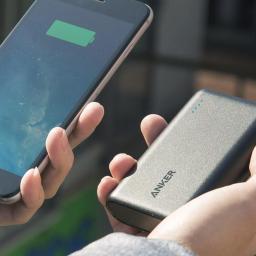 |
by Steve Dent on (#6XZ3H)
Anker has recalled its PowerCore 10000 power bank (model A1263) due to an issue with the lithium battery that can cause it to "overheat, posing fire and burn hazards to consumers," the US Consumer Product Safety Commission (USCPSC) wrote. The company received 19 reports of fires and explosions, including two reports of minor burn injuries and 11 property damage claims totaling over $60,700.It's a large recall covering 1,158,000 units sold (in the US only) through Amazon, Newegg and eBay between June 2016 and December 2022. To confirm that you have that specific model, check the rear of the device to confirm it reads: "Anker PowerCore 10000" with model number "A1263."To receive a $30 gift card or replacement 10,000 mAh power bank, you'll need to send a photo with the submission date and word "recall" or "recalled" written in permanent marker. You must also send a photo showing the model number and serial number printed on the bottom of the power bank, along with a receipt (though the latter is optional). See Anker's recall page for more details.Once you receive confirmation that your power bank is subject to the recall, you must dispose of it safely at a municipal household hazardous waste (HHW) collection center (call ahead to confirm if they accept rechargeable lithium-ion batteries). Do not throw them in recycling bins, the trash or battery disposal bins available at retailers.Though generally safe and reliable, lithium ion batteries can degrade over time and pose a fire hazard. Couriers like FedEx and airlines have strict rules about transporting them, and Southwest Airlines recently decreed that passengers must have battery chargers visible when in use on flights.This article originally appeared on Engadget at https://www.engadget.com/mobile/anker-recalls-over-a-million-power-banks-due-to-fire-and-burn-hazards-110017437.html?src=rss
|
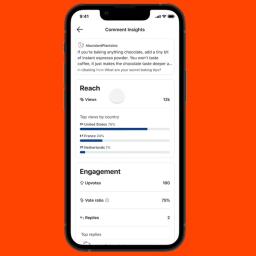 |
by Karissa Bell on (#6XYYR)
Reddit is making it easier to gauge the impact your comments are having. The company is introducing detailed analytics for comments that measure views and other engagement metrics. Reddit shared the change as part of a larger batch of updates around how it handles comments on its platform.Comment insights will provide details around upvotes (including the ratio of upvotes to downvotes), replies, views, shares and awards. Additionally, Redditors will now be able to share comments as a standalone post on Reddit.RedditThe platform is also adding a drafts feature for comments that will allow people to save up to 20 drafts for 14 days. Drafts will automatically save, according to Reddit, so that you can revisit your thoughts if you navigate away from the page or leave the app mid-comment. In an update to moderators, Reddit said that drafts is "still in its early iteration" and that it may tweak how the feature works in future versions.The changes are the latest way Reddit has added more flexibility around comments in recent weeks. Earlier this month, the company said it would allow users to hide their commenting history from their profiles.This article originally appeared on Engadget at https://www.engadget.com/social-media/reddit-adds-analytics-and-drafts-for-comments-060550128.html?src=rss
|
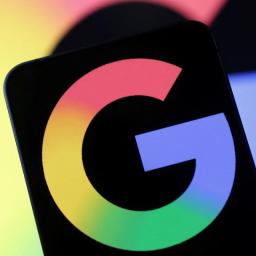 |
by Anna Washenko on (#6XYPG)
Google Cloud experienced outages today that led to disruptions for many online services. Reports of issues for Google products and others began around 2 PM ET. The company was able to restore function to its own apps, but several other businesses have continued to experience problems for some users.In an update at 4:16PM ET, Google said, "We have identified the root cause and applied appropriate mitigations. Our infrastructure has recovered in all regions except us-central1. Google Cloud products that rely on the affected infrastructure are seeing recovery in multiple locations. Our engineers are aware of the customers still experiencing issues on us-central1 and multi-region/us and are actively working on full recovery. We do not have an ETA for full recovery."Screenshot from DownDetector at about 3:25PM ETSpotify, Discord, Snapchat, Etsy, UPS and OpenAI all experienced a high volume of reports on DownDetector, with some informing users of disruptions. Even the Pokemon Trading Card Game and Pokemon Go weren't spared issues. Snapchat acknowledged the ongoing issues on its support page. OpenAI has posted that users may have trouble logging in due to "issues affecting multiple external internet providers." AWS also experienced a higher-than-usual volume of reports on DownDetector during the outage, but Amazon clarified in a statement to Engadget that it has no broad service issues and noted that its AWS Health Dashboard is a better indicator of its current status than DownDetector.Almost all services have now returned to normal operation. By 5PM ET, Spotify's main page loaded for our editors and reports of outages on DownDetector had fallen back to close to their baseline. Other platforms like Snapchat and Discord also seemed to be functioning normally for us. Google said at the time that its products were coming back online across multiple regions and that it expected the recovery to be complete "in less than an hour." However, as of 7:13PM ET, the company noted that several Google Cloud components were still experiencing "residual impact." Google Cloud Dataflow, Vertex AI Online Prediction and Personalized Service Health are all still somewhat affected, and the company has not provided a timeline for when everything will be back to normal.This article originally appeared on Engadget at https://www.engadget.com/big-tech/google-cloud-outages-spotify-discord-snapchat-and-more-were-down-for-hours-193156868.html?src=rss
|
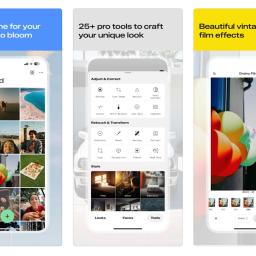 |
by Anna Washenko on (#6XYT6)
After several years, Google has released a major update to the iOS version of its Snapseed photo editor. Version 3.0 is the program offers a complete redesign of both the iPhone and iPad apps. All of the images that have been edited with the tool are displayed in a grid. Navigation has been rearranged into three tabs, with a new Faves section for the photo tools that you want to quickly use on the regular. It boasts more than 25 different tools and filters for altering photos, including some newly added film filters. Snapseed also has a refreshed its logo with a more streamlined look.Google acquired Snapseed all the way back in 2012. The new take on the app is a surprise, since Snapseed hadn't received any major updates on iOS since 2021. One thing has not changed: the app is still free and has no advertisements. For now, the listing for Snapseed in Google Play is still a version from last year; it's unclear if or when 3.0 will arrive on Android.This article originally appeared on Engadget at https://www.engadget.com/apps/google-completely-remade-its-snapseed-ios-photo-editor-222003395.html?src=rss
|
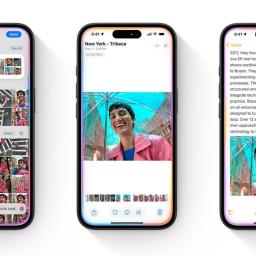 |
by Ian Carlos Campbell on (#6XYT7)
The new version of Siri that was demoed alongside Apple Intelligence might not be released until Spring 2026, Bloomberg reports. Apple officially delayed Siri's release to some time "in the coming year" back in March.The new Siri could be included in a planned iOS 26.4 update next year, which Bloomberg writes will likely arrive in March. Apple announced the smarter and more personal version of Siri at WWDC 2024 over a year ago now, and nearly two years before this hypothetical Spring 2026 release date. The company could demo the updated AI assistant again at its iPhone event in the fall or even release the new Siri early, but timing reportedly remains up in the air.Apple's proposed update to Siri is supposed to give the company's aging voice assistant the authority to take action inside of apps and understand the content and context of your screen. The company's demos showed off Siri referencing emails for flight information and embedding photos in documents, all on its own, as evidence of how much more capable the assistant could be.In a recent interview with The Wall Street Journal, Apple executives attribute the delay of the new Siri to it simply not being up to the company's standards. Internally, Bloomberg writes that there's also disagreement between Apple's marketing and engineering teams as to who is really at fault. The company shouldn't have hyped up the new Siri at WWDC 2024 or built an ad campaign around features that might not ship (Apple's pulled its Siri ads in March). But the engineering team may have been misleading as to how ready the assistant really was.As testament to how careful Apple is being now, its focus on AI at WWDC 2025 was far more muted. The closest the company got to touching on some of the magic of the new Siri was the updated version of Spotlight that's coming in macOS 26, which can leverage the same App Intents framework Siri is supposed to use to perform select actions in apps, like sending a text in Messages without having to open the app.This article originally appeared on Engadget at https://www.engadget.com/ai/apples-ai-infused-siri-may-not-show-up-until-spring-2026-221212681.html?src=rss
|
 |
by Ian Carlos Campbell on (#6XYRS)
Meta has entered into an agreement with XGS Energy to develop "next-generation geothermal energy" projects in New Mexico. The plan is for these projects to connect directly into the electrical grid that Meta's data centers draw from, feeding the growing energy needs of the company's AI development.Both companies claim the new deal will add 150-megawatts of carbon-free energy to the grid "with zero operating water use." New Mexico is apparently uniquely suited for geothermal energy production because the state has "some of the best hot rock resources in the country," according to the deal announcement. XGS Energy's approach will allow "these hot, but typically dry, rock resources" to be used to produce electricity without having to worry about water accessibility.The agreement is split into two phases, an initial smaller one and a second larger one, both of which are "projected to be operational by 2030." Meta has previously explored geothermal energy through a partnership with Sage Geosystems, and like its past deals - including Meta's recent 20-year agreement to use a nuclear power plant in Illinois - the company is focused on finding more sources of energy for its AI data centers."Advances in AI require continued energy to support infrastructure development," Urvi Parekh, Meta's Global Head of Energy, shared in the deal announcement. "With next-generation geothermal technologies like XGS ready for scale, geothermal can be a major player in supporting the advancement of technologies like AI as well as domestic data center development."This article originally appeared on Engadget at https://www.engadget.com/big-tech/meta-is-helping-to-fund-geothermal-energy-projects-in-new-mexico-212222815.html?src=rss
|
 |
by Jessica Conditt on (#6XYPH)
Mixtape is the answer to the question, What if the movie High Fidelity was a video game?" It's not a perfect analogy, but it's pretty damn close, and either way it's a sign that Mixtape is going to be a fabulous slice of late-1990s, early-2000s nostalgia, complete with a banging soundtrack.You can hear it in the trailers - Mixtape absolutely nails the classic Moviefone tone, and it seems that this vibe extends to the full game. I played roughly 30 minutes of Mixtape at Summer Game Fest 2025, and in that time I became enamored with the game's lead character, a rebellious and insufferably cool teenager named Rockford who's about to leave suburbia to pursue her dreams of becoming a music supervisor in New York City. She talks directly to the player as she introduces her two also-very-cool best friends and cues up the game's music, breaking the fourth wall just like John Cusack. Most of the game plays out in a third-person view, following along as Rockford and her friends casually skate down tree-lined streets, flee from the cops in a high-speed shopping-cart sequence, and hang out in her bedroom, looking at Polaroid pictures and CDs while planning the best way to steal liquor from her parents' stash.Mixtape comes from The Artful Escapestudio Beethoven & Dinosaur, and it similarly uses music as a core storytelling and scene-setting device. This makes perfect sense, considering the studio's founder, Johnny Galvatron, is a legit rock star based in Melbourne, Australia. Leaning into musicality also worked out well for The Artful Escape, whichearned Beethoven & Dinosaur a BAFTA award in 2022. Mixtape's soundtrack is populated by the top teenage-dirtbag bands from the 80s, 90s and slightly beyond, including DEVO, Roxy Music, The Smashing Pumpkins, Iggy Pop, Siouxsie and the Banshees, Joy Division and the Cure (but not Wheatus, as far as I can tell, just to be clear).Visually, Mixtape has a painterly 3D aesthetic with gorgeous golden light and purple shadows, reminiscent of Life is Strange or Telltale's The Walking Dead series. In action, the characters move in a windswept, Spider-Verse animation style that doesn't interrupt the gameplay flow. Even soaring down the snakelike asphalt on a skateboard, Rockford responds immediately to controller input and her ride isn't interrupted by stray or late animations. Mixtape looks lovely and feels great.Annapurna InteractiveThere are also surprising little moments with alternative mechanics in the game's first half hour, including a scene straight out of Wayne's World where you make the trio headbang in a car, and another where you control two tongues making out in a close-up, Ren & Stimpy kind of cartoon realism. When Rockford explains what a music supervisor is, real-world reference images fill the screen in a tongue-in-cheek educational interlude. Throughout all of this, the music continues to roll, each song purposefully placed and given time to shine.It would be easy for Mixtape to feel like a cheap nostalgia grab, an exploitation of Millennial players' memories of skipping CDs and pre-cellphone party planning, but that simply isn't the case so far. Mixtape feels like a love letter to the early aughts, filled with surprising mechanics, beautiful graphics and all the right references executed extremely well.Mixtape is due to hit Steam, PlayStation 5 and Xbox Series X/S in 2025, published by Annapurna Interactive.This article originally appeared on Engadget at https://www.engadget.com/gaming/mixtape-turned-me-back-into-a-millennial-teenage-dirtbag-200337301.html?src=rss
|
 |
by Anna Washenko on (#6XYPJ)
We've been covering all the news Apple announced at WWDC 2025, but possibly the most exciting element coming to iOS 26 wasn't discussed on stage. The next update to the operating system will let people set custom snooze times. MacRumors reported that iOS 26 will offer anywhere from one to 15 minute snoozes that users can select when setting the alarm.For years, Apple has kept the snooze timing locked at nine minutes. If you wanted to doze at a different interval, you'd need to set separate alarms or use a different app than the iPhone's built-in Clock. It was an odd choice for Apple to not allow personal preferences on this aspect of its smartphones, so anyone who's been frustrated by the nine-minute restriction will have a little extra treat to look forward to in the mornings when iOS 26 becomes publicly available this fall. And since there's been some recent research showing that snoozing may not be a terrible thing, we can take full advantage with zero guilt.This article originally appeared on Engadget at https://www.engadget.com/mobile/smartphones/apple-will-at-long-last-let-you-customize-snooze-times-on-alarms-in-ios-26-190001600.html?src=rss
|
 |
by Lawrence Bonk on (#6XYPK)
The Nothing Phone 3 is getting an official release for US customers. The handset will be available to purchase from Amazon or directly from the company, according to a report by TechCrunch. Nothing CEO Carl Pei has been teasing this news since April, but now it's official.Canadians will also be able to get in on the retail action, as Nothing has inked a deal with Best Buy to sell the new handset in the region. The phone goes on sale next month.The company has produced eight handsets since forming back in 2020, but only the Phone 2 has made it to general sale in the US. For the other models, users would have to buy a unit via a beta program and there was no after-sale support. So this is good news for North Americans who are tired of Samsung and Apple.
|
 |
by Will Shanklin on (#6XYK8)
Here's an AI-government collaboration of a less... unsettling variety than some. Google DeepMind is teaming up with the National Hurricane Center (NHC) for tropical cyclone season. The AI research lab claims it can predict hurricane paths and intensities with at least the same accuracy as traditional methods.NHC forecasters have already begun using DeepMind's AI model. Google says they're designed to support, not replace, human NHC forecasters. (Although President Trump's National Weather Service cuts have already reduced its headcount.) The company is also careful to repeatedly describe its models as "experimental."Google claims that its models offer fewer trade-offs than physics-based predictions. The more accurate those methods are at forecasting a hurricane's path, the worse they are at predicting its intensity. (And vice versa.) The company says its experimental system offers "state-of-the-art" accuracy for both.DeepMind backs that up with data from real-life storms over the last two years. On average, its five-day hurricane track prediction gets 87 miles closer to the storm's actual path than ENS, a widely used traditional model. Google's was comparable to a 3.5-day prediction model. In other words, it's like gaining an extra 1.5 days of warning with the same level of confidence. The company says such an improvement typically takes over a decade to achieve.GoogleAlongside the NHC collab, Google is launching a new website that you can try. Now in a public preview, Weather Lab lets you see the AI storm predictions. It lets you view both live and historical predictions. You can even compare them to physics-based models to see how the AI version measures up.It's important not to treat Weather Lab's experimental forecasts as official. But the website could come in handy if you live in Hurricane Alley. You can check it out now.This article originally appeared on Engadget at https://www.engadget.com/ai/google-deepmind-is-sharing-its-ai-forecasts-with-the-national-weather-service-173506456.html?src=rss
|
 |
by Lawrence Bonk on (#6XYK9)
Star Trek: Strange New Worlds will only visit around 26 strange new worlds before shuttling into that cancellation sunset. The show will end with a truncated fifth season of six episodes, according to reporting by Deadline.This news is relatively surprising, given that Strange New Worlds seems like the most popular and successful show of the modern era. However, not a single newer Trek series has made it past five seasons, so maybe that's just the way things go now. It's worth remembering that Captain Kirk's narration in the original 1960s Star Trek spoke of a five-year mission.We're deeply grateful to Paramount+ for the chance to complete our five-season mission, just as we envisioned it, alongside our extraordinary cast and crew. And to the passionate fans who've boldly joined us on this journey," executive producers Akiva Goldsman, Henry Alonso Myers, and Alex Kurtzman said in a joint statement provided via press release.This is a bummer, as Strange New Worlds is a fantastic watch, but it's not the end of the world. The show is about to premiere its third season on July 17. A full fourth season is already in production, and the shortened fifth season will ramp up sometime in the next year. So there are still 26 episodes left to watch. That's a good amount of Trek.It's also not the end of live-action Star Trek on television screens. The upcoming Starfleet Academy has already been renewed for a second season, though that's the only new show on our radar. There have been rumblings of movies, but we aren't sure what's actually being made. A film chronicling the formation of Starfleet was announced around 18 months ago, but there hasn't been any news since then. Patrick Stewart has been openly campaigning for a Captain Picard movie, but, well, he's 84 as of this writing.This article originally appeared on Engadget at https://www.engadget.com/entertainment/tv-movies/star-trek-strange-new-worlds-will-end-with-a-truncated-fifth-season-171054923.html?src=rss
|
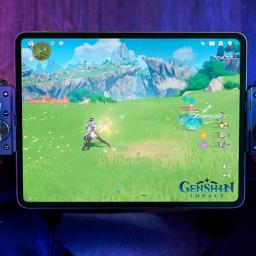 |
by Matt Tate on (#6XYKA)
Razer has announced its latest lineup of Kishi mobile gaming controllers, capable of housing your phone, small tablet and, in the most comically extreme case, a full-size iPad.The Kishi V3 Pro XL is seemingly designed for people who like to play games on the largest possible mobile canvas, but don't want to rely on touch controls or just pair a wireless pad. The two sides of the controller stretch out so wide that the V3 Pro XL is able to accommodate a 13-inch iPad Air or Pro, or compatible Android slate of similar proportions, morphing the tablet into a handheld console that makes the Switch 2 look decidedly miniature in comparison.Take away the "XL" bit and the supersized controller offers the same functionality as the standard Kishi V3 Pro, which is built for USB-C phones and tablets up to 8 inches. Both controllers feature precise anti-drift TMR thumbsticks with swappable caps, dual mouse click-back buttons and claw grip bumpers, as well as Razer's Sensa HD haptics (not currently supported on iOS). Wired and remote play is possible on PC via the Razer Nexus launcher, and you get USB-C passthrough charging built in. There's a 3.5mm headphone jack too if you prefer wired audio.RazerRounding out the refreshed lineup is the Kishi V3, which is designed for iPhone and Android handsets. Many of the Pro features trickle down to the streamlined option, including the full-size TMR sticks (without the swappable caps) and back buttons. The USB-C island" design of the controller makes it widely compatible with cases, so you don't need to yank yours off every time you want to play a game.Whatever model you pick up, Razer will give you up to six free months of Apple Arcade, normally priced at $7 per month. Will that soften the blow of the prices for these controllers? Not really. The Kishi V3 costs $100, the V3 Pro is $150, and the V3 Pro XL comes in at a whopping $200, which seems extremely high for a controller add-on for your massive tablet. But if you've been looking for a controller for that very specific use case, Razer has you covered.This article originally appeared on Engadget at https://www.engadget.com/gaming/razers-new-kishi-v3-controllers-can-fit-up-to-a-13-inch-ipad-170317228.html?src=rss
|
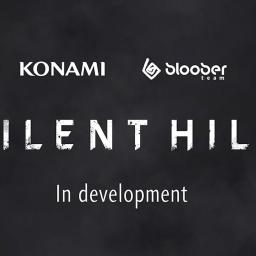 |
by Kris Holt on (#6XYG3)
A remake of the original Silent Hill is in development, it was revealed during Konami's Press Start stream on Thursday. An image announcing that another Silent Hill game from developer Bloober Team was in the works appeared during the stream. It was accompanied by music from the first game in the series. The official Japanese Silent Hill account on X later clarified that Bloober is modernizing the original 1999 entry.Back in February, it emerged that Bloober is making a new title based on Konami's intellectual property. The two companies previously worked on a remake of Silent Hill 2, which was released in October and, by January, had sold more than 2 million copies. It was also one of our favorite games of 2024.
|